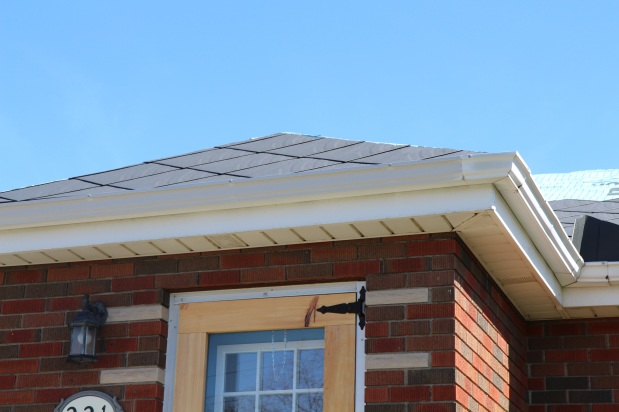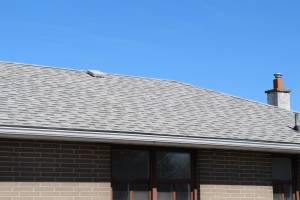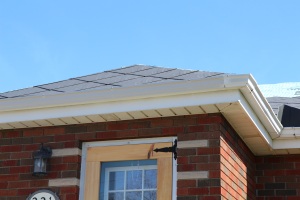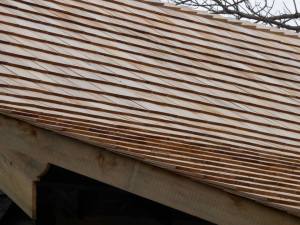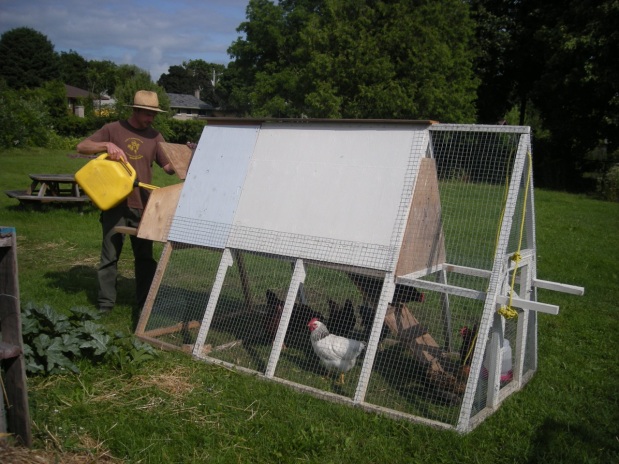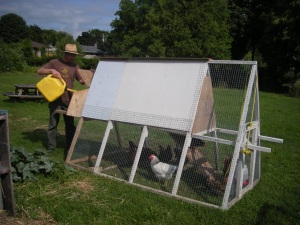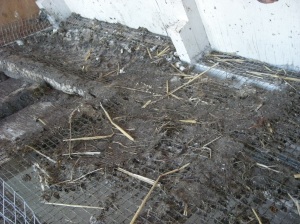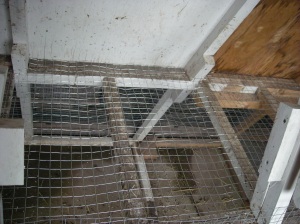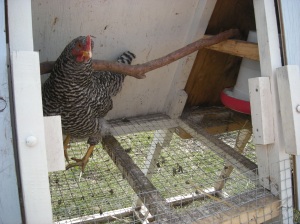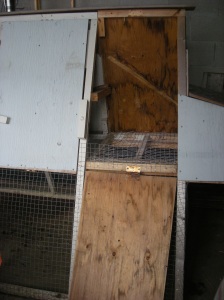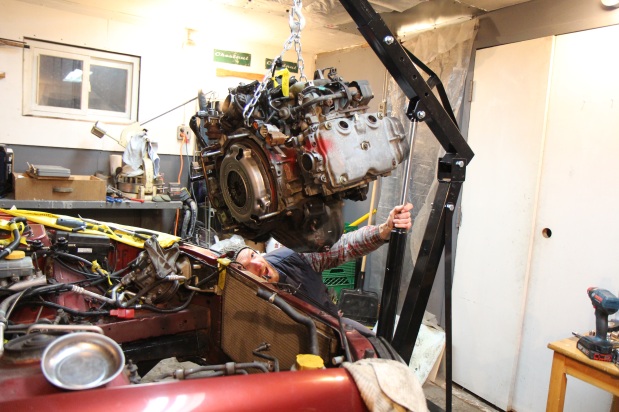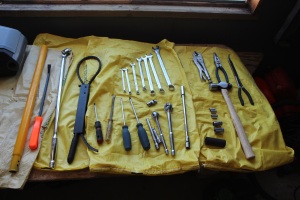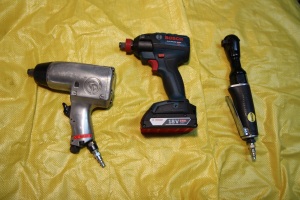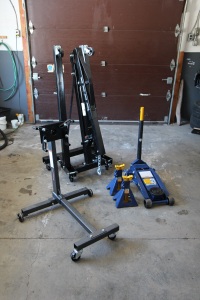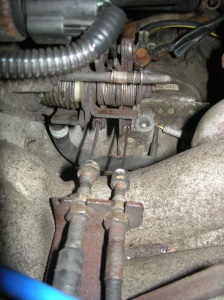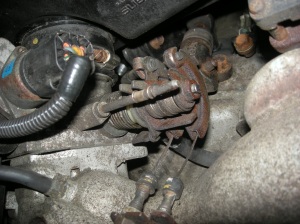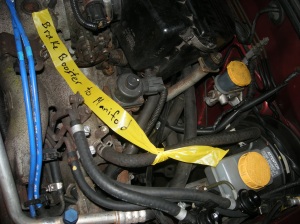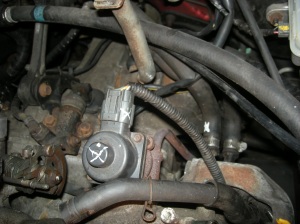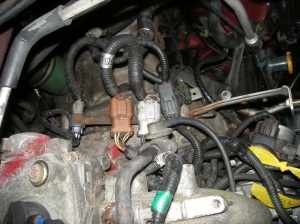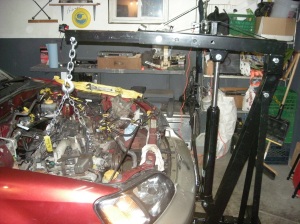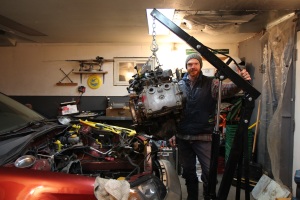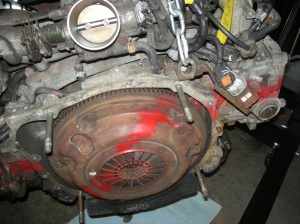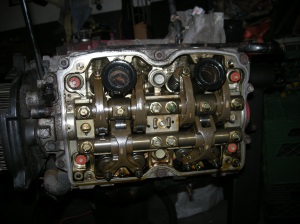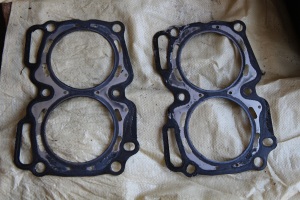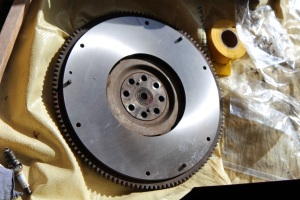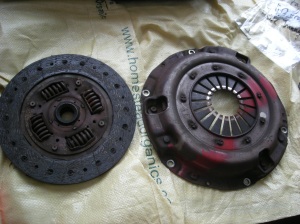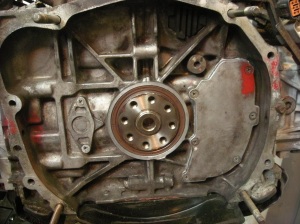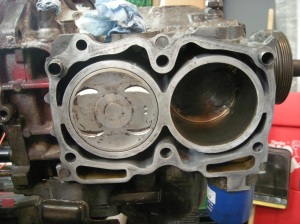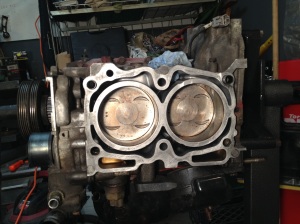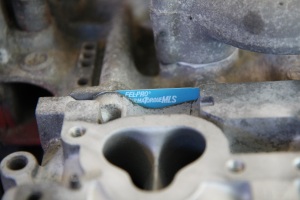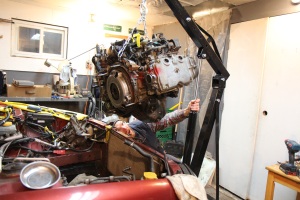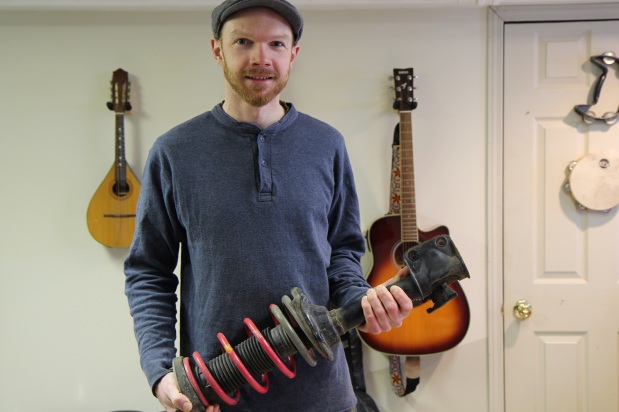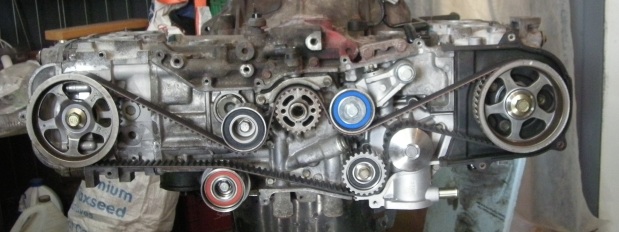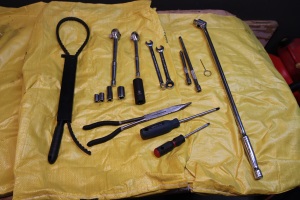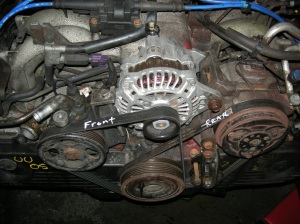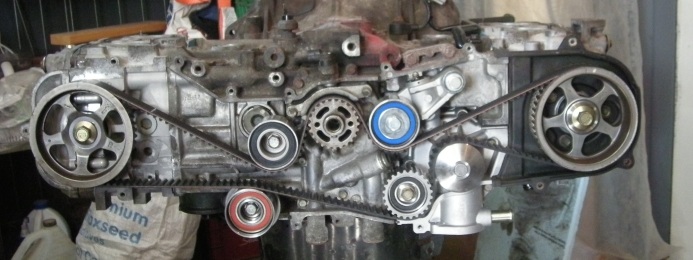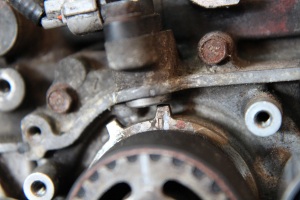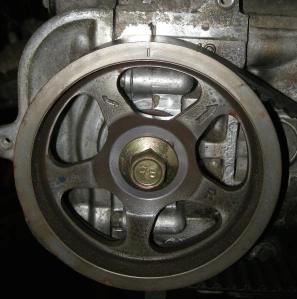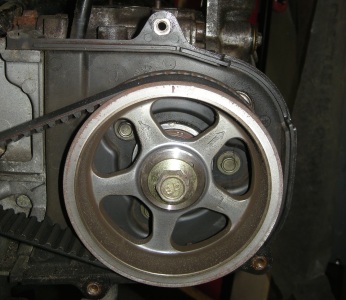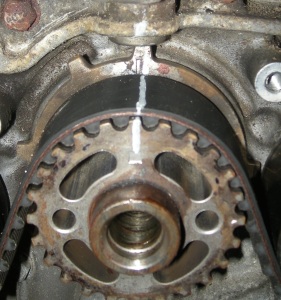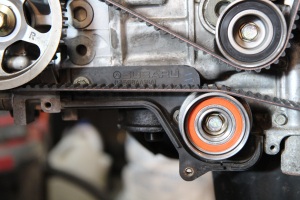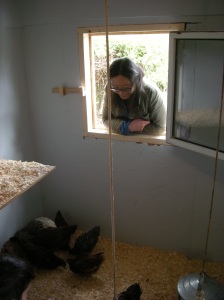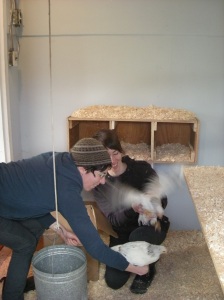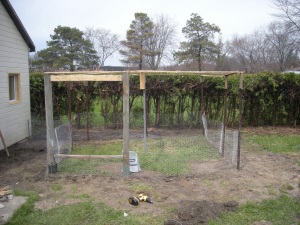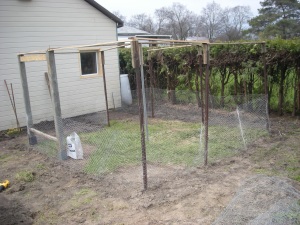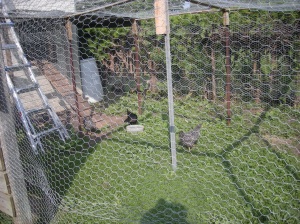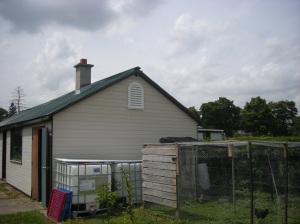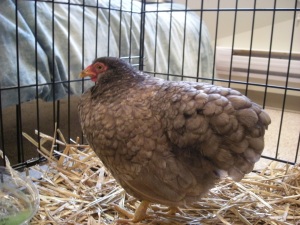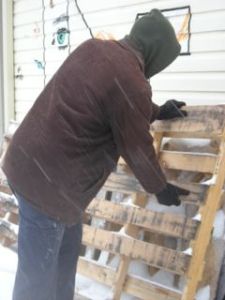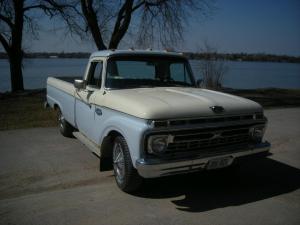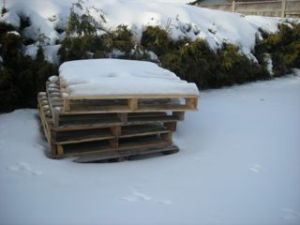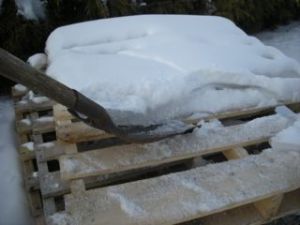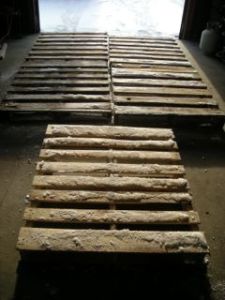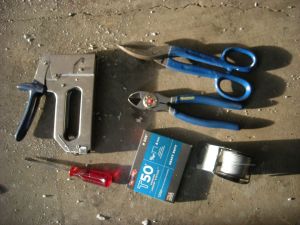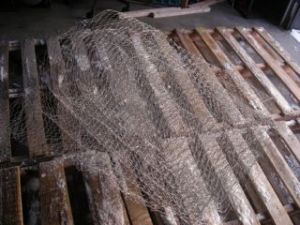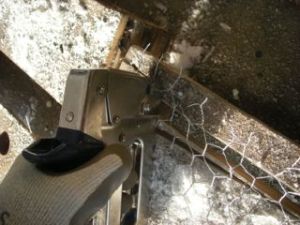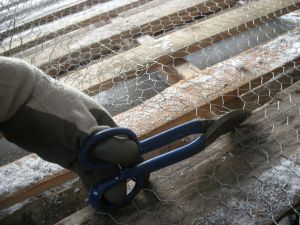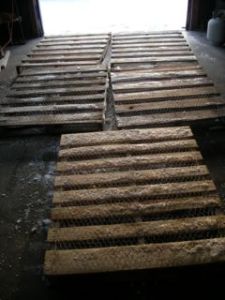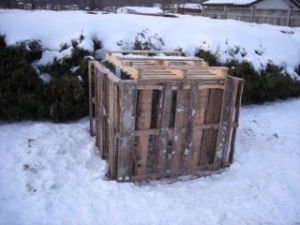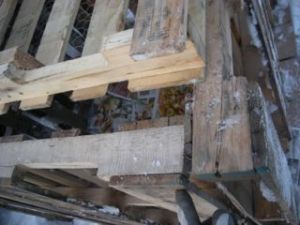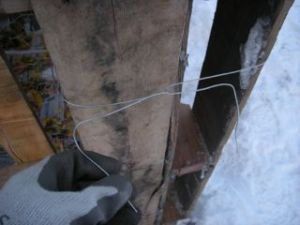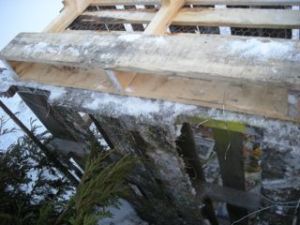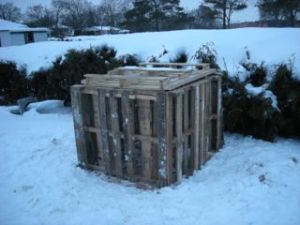Since I was a boy, I loved scaling roofs. One of my favourite activities was to climb the big pine tree beside our woodshed. Hop off a big branch onto the woodshed roof, then jump off the other side of the shed (don’t worry it wasn’t that far off the ground).
My boyhood home was a wonderful whimsical place decorated with parts and pieces from old ships. The house itself was shaped much like a boat with many windows, including porthole windows and a big deck on the top. Complete with lights and wind instruments atop a tall pole. The vents, used for the laundry and bathrooms, were like those you would see on an old ship with fins on the top to guide them out of the wind. In fact, most of the pieces (lights, vents, porthole windows, etc.) were taken from decommissioned ships.
There was an exterior staircase leading to the roof. But when my father installed central air conditioning into the house, he located the air conditioner in the middle of that staircase to discourage his two young boys from going on the roof. This, of course, did not work. If anything, it just gave us a challenge and a greater sense of accomplishment when we carefully skirted the air conditioner to our large flat tar coated summit.
It was like a playground up there. Those big vents I would turn, stick my head in and yell down into them. Watched the wind turbine spin around endlessly. One can understand why when it came to replacing the roofs here at the Shagbark Homestead, on the house and outbuildings, I was keen to do them myself. Fortunately, none of them are over one story and the pitches are all pretty reasonable.
This blog post relates only to the different options for roofing whether you are going to hire installers or do it yourself. It is not a DIY post.
Being a gardener and concerned about the state of our environment, I wasn’t about to just slap asphalt shingles on like most people would do. Instead, I spent quite a bit of time investigating the different roofing options available. To begin, I will touch on why I don’t like asphalt.
Asphalt shingles can be summed up in two words: cheep and dirty. They are by far the cheapest roofing option and in my opinion the worst. Because they don’t last very long and are almost completely non-recyclable. Municipal waste departments all over the world are plagued with the problem of dealing with the enormous amount of waste created by asphalt shingles. They also add a small amount of toxic chemicals to the rainwater taken off roofs with asphalt shingles making it unsuitable for use watering vegetable gardens. I don’t like asphalt roofs and I hope that you don’t decide to put an asphalt roof on your house. But if you do, I recommend using shingles that are based with fibreglass cloth as they will at least last longer for minimal increased cost over paper based ‘three tab’ shingles. Three tab shingles are just garbage and shouldn’t even exist.
There are other types of shingles out there that are supposed to be biodegradable. I have heard of some made out of hemp fibre and some sort of organic tar compound that look similar to asphalt shingles. I don’t know that much about these type of shingles. When I looked into them, they seemed quite expensive and since they are a very new product the promised longevity is questionable. If you have any experience with them, I would appreciate a comment below.
Steel! Steel is my number one recommended roofing option. Steel just sounds cool, like heavy metal or Superman, the man of steel. I would choose Superman over Oscar the Grouch to protect my house and garage from the rain and snow.
Steel is more expensive than asphalt shingles but with a much longer life span. Steel is good for rainwater collection, fire proof and best of all very recyclable. You will get money for a worn out old tin roof. Instead of being turned away from some waste dumps. There are many options when it comes to steel roofing all with different prices and advantages.
Painted tin sheet metal is most common and the most affordable steel roof. It won’t last as long as galvanized and has the added expense of strapping. Sheet metal roofs can go over an existing asphalt roof, which saves our municipal waste departments stress and has the added advantage of some sound dampening and protection if a small amount of water gets underneath. Sheet metal comes in a number of different profiles appropriate for almost any roof with a slope. There are also some patterned options with added expense and no increased advantage other than ascetics. But hey, steel roofs last for a long time, it’s important to be happy with the look of your roof.
Steel shingles are a more visually attractive option to steel sheet metal. Available in an overwhelming myriad of styles and colours. Some of which look convincingly like slate, clay tile or cedar shingles. They are usually made of galvanized steel and as such, are more expensive and longer lasting than painted tin sheet metal. However, they don’t require strapping which saves that expense and like sheet metal can go over an existing asphalt shingle roof.
I love steel roofs but they aren’t perfect. They do have their disadvantages, they can be challenging to walk on. In cold climates, they need snow shields to prevent snow slides (which don’t always work). They are noisy even with an asphalt roof underneath and an insulated attic, a heavy rain is a lot more irritating on a metal roof versus other options.
Other metal roofs like aluminum and copper are great and have all the same advantages (and disadvantages) of steel. Even longer lasting and are more recyclable than steel. They are also, not surprisingly, more expensive. If it is important to pass along a house with a long lasting roof to your grandchildren or you can get aluminum on a good sale, then by all means go for it.
Slate is not a roofing option most people consider, it is usually only seen on churches and stately old mansions. There is good reason for this. As slate is by far the most expensive type of roof. It is really complicated to install and must be done by experienced professionals. You would be taking your life in your hands to try and walk on a slate roof with any kind of moisture on it. This isn’t really an option for most homeowners. However, it is a completely natural material and will last more than a lifetime. It is literally the top choice of roofing.
Cedar shingles make for beautiful roofs. I seriously considered putting a cedar shingle roof on my house until I read about all of the disadvantages of modern cedar shingles. There is still a common myth that cedar shingles roofs will last for 40 years. As this was true when most cedar shingles came from old growth western red cedars. These are very difficult to find now and we need to leave the few remaining old growth cedars alone on the West Coast. Most cedar shingles available on the market are from younger trees and you will be lucky if they last longer than asphalt shingles. They can be quite costly especially if you are hiring installers. A cedar roof in the middle of a hot dry summer is also a bit of a fire hazard. But they look beautiful and are a natural biodegradable material. I still don’t recommend them for roofs but work well as siding, where they will last quite a long time with some maintenance.
Clay tile is a very good roofing option if you live somewhere in the world where the temperature usually stays above zero celsius. I live in cold Canada where one winter would destroy a clay tile roof. In warm climates clay roofs are very long lasting. They make for very beautiful roofs. Tile roofs are on the pricey side but not unaffordable (like slate) for a more than common home.
Flat roofs, like the one of my childhood home are problematic. If you live in a house with a flat roof, move! Or if that isn’t an option, I would recommend putting a trussed roof over the flat roof. If the flat roof must stay. There is only one option, some kind of membrane. These are usually asphalt based, some have a tar and gravel cover and some are synthetic. I would recommend hiring an installer for a flat roof as there is some liability there. However, if there is even the slightest pitch (or you can add one), you can probably get away with a high profile sheet metal roof.
Good luck with your decision making and keep your head dry.

